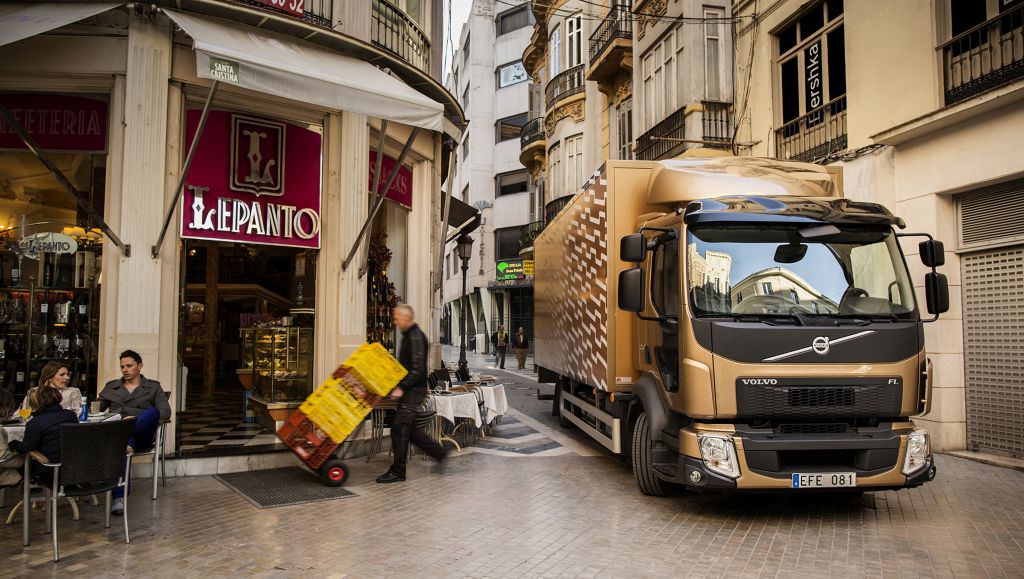Six tips for choosing a city distribution truck


There are a number of things to take into consideration when choosing a vehicle for city distribution, such as what the vehicle will be used for, where it will operate and how long it will be used for.
Volvo Trucks’ FL, FE and FM vehicles are all designed to cater to the different needs in the distribution market, and all three can be tightly specified for individual customer requirements. While it is good to have a number of options, it can also be confusing. Making things even more difficult is the fact that many customers in this segment are not necessarily focused on logistics.
“We are aware of the fact that many of the businesses that buy trucks for city distribution are not primarily logistic operators. They are businesses whose primary focus is elsewhere, such as bakeries, or entrepreneurs hauling equipment. They might even have been using vans for delivery before, and now are looking for the space and versatility provided by a truck,” says Tobias Bergman, Product Manager at Volvo Trucks.
His recommendation? “Think through your needs today and in the future. But you don’t need to do it on your own. Your local Volvo Trucks dealer can be a partner in helping you to determine what vehicle and purchase agreement is best suited to your needs.”
Plan ahead
Trucks that are precisely tailored to a task can provide low cost of ownership. But a more versatile vehicle with fewer design specifications often fetches a higher resale price. Consider the pros and cons of a tightly specified vehicle if you know you will need to upgrade your fleet in a few years, or if your assignments are likely to change.
1. Consider emission rules
Limits on both noise and air emissions are getting stricter in most cities. These regulations could affect both vehicle choice and terms of purchase. To future-proof your business, Volvo Trucks can often provide a buy-back option if you purchase a new vehicle. Alternatively, an operational lease might be a smart option.
2. Keep an eye on visibility
Trucks with small wheels and direct visibility allow drivers a better overview of their surroundings. This can be an important safety consideration in cities with narrow streets and in areas with many cyclists and pedestrians. Some cities have even started to legislate for visibility, which trucks must abide by. It’s an area to keep an eye on.
3. Think about when and how you load
Where and how often the vehicles need to be loaded and unloaded is another key consideration. In city distribution, an average driver may get in and out of the vehicle every 200-300 metres. A low instep can save time and avoid injury. Having a compact vehicle also helps when you are delivering to small shops in the city centre, which often have small loading bays and tight ramps.
4. Give some thought to manoeuvrability
The smaller a vehicle is, the easier it is to manoeuvre. This can be a key consideration when getting to and from loading areas and navigating narrow streets. There is no standard for how large loading bays need to be. Generally speaking, if the vehicle is used to load at large depots, having a larger vehicle should not pose a problem. Meanwhile, delivering to small shops can mean guiding the vehicle down steep ramps or small back alleys.
5. Make the most out of long stretches
If the truck is sometimes used to make longer inter-city trips, a larger and more versatile truck might be the best option. During longer journeys, a driver needs space to rest. Options such as integrated navigation and Dynafleet can also help the driver stay on course and save fuel on long journeys. A bigger, more comfortable vehicle, also helps attract drivers.
VOLVO FL: Adapted for city distribution, light construction and waste and recycling transport. GVW 10-18 tonnes and GCW up to 25 tonnes.
VOLVO FE: Adapted for regional- and city distribution, light construction and waste and recycling transport. GVW 18-26 tonnes and GCW up to 44 tonnes.
VOLVO FM: Adapted for distribution, construction and auto transport. GVW 18-46 tonnes and GCW up to 100 tonnes.